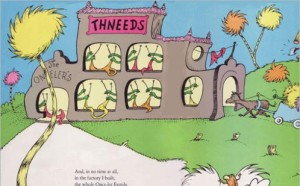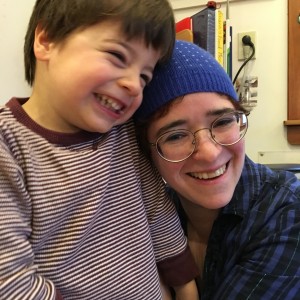This week I had another lesson with my Tarot teacher, who has also been trained as a Christian spiritual director. We were talking about the ways my community ties have shifted, and sometimes broken, because my writing is up-front about sensitive topics like abuse, queer sexuality, and faith. I’ve been disappointed that even some openly gay writers feel obliged to keep their “brand image” respectable and G-rated. My teacher asked me, “Why do you write about sex?”
Believe me, no one could be more surprised than I am about the changes in my work and worldview. I often joke that my husband and I were the only two non-Orthodox people in Manhattan who saved ourselves for marriage. That was the right choice for us: we needed a sacred boundary around our love to defend it from callous hookup culture and smothering family dynamics. But as I grew up and had genuine friendships with other adults who’d made different choices, I began to doubt the universal rightness of my conservative sexual ethic. People with a more extroverted temperament and different family history might be happier taking risks that I’d avoided. I have the kind of overly porous empath personality that needs to be cautious about intimacy (sexual or otherwise) with new people, but the downside is that I miss out on the carefree enjoyment of trusting my fellow humans.
I sensed that the fearful and judgmental notes in my sexual ethic were becoming too dominant, so I set out to write fiction about someone completely different from me: Julian, a handsome man with great social skills, who could pursue ecstasy and intimacy without fear of rape culture, pregnancy, or being laughed at because of his wobbly thighs. I took seriously C.S. Lewis’s observation that the sins of sensual excess may be more innocent than the cold pride of the ascetic. The former person is at least seeking the good things of God, love and beauty, albeit in a lower form, while the latter shuts himself off from the life force entirely. I discovered that Julian’s resilient courage to love and love again was a better definition of holiness than “thou shalt not taste, thou shalt not touch”.
Writing about sex as a path to Spirit put me in touch with the life force in my body in a new way. I gradually realized how disconnected I had been from my sensual power. As I’ve written here before, affirming the truth of my embodied experience in arguments with anti-gay Christians primed me to notice that I’d been gaslighted about my experience of abuse, too.
Moreover, in researching Julian’s novel, I met spiritually mature and committed gay male couples who were in open relationships, a common reality that is still a bridge too far for the liberal church’s vision of gay Christian marriage. A new friend of mine, who is a genderqueer Christian, noted wryly that the Trinitarian God is in a plural intimate relationship with Godself that invites everyone in the world to join–talk about polyamory! (See my 2009 post, “I’m in an Open Relationship with Jesus”.)
Sex, like every other interpersonal activity, needs healthy boundaries, compassion, and self-awareness. But we often set those boundaries unconsciously and rigidly, based on bad theology that may be distorting many other areas of our lives as well. I write about sex to start a better conversation about these issues. And because it’s fun, of course.
This leads me into the link that inspired this post. (You were wondering when we were going to get there, already?) KC Slack, a Unitarian Universalist ministry student, shares this lively and provocative essay on Harlot Media: “I Love God and I Love Fucking”. She talks about why she sees no contradiction between her faith and her queer, womanist, polyamorous sexuality. As I said, it probably wouldn’t be the best way for me to live, but these passages were a perfect answer to my Tarot director’s question:
In almost the exact opposite way that many take on a practice of meditation to free themselves from their physical body to find something beyond, I like to sink in to my experience. To find what’s transcendent in the particulars of here and now, of my body and of physical sensations…
…My theology is focused on the particular, on the experience of being in the world, on the margins. In theology we talk about the Wesleyan Quadrilateral: a methodological approach to theological reflection that understands all theological work to have four sources: scripture, tradition, reason, and experience. Most of the time this quadrilateral is understood to be in order of importance–I strive to flip that. Experience of the world, of God, and of God in the world is the primary source for my theology and my faith.
I experience the world from my particular, then I reason and read others’ experiences and contextualize, then I consider tradition and scripture in light of what my body and my life know.
God is important to me and I believe that if I wish to know God, I need to really know myself and know other people in a variety of contexts. Connection is important; even the most casual sex is a type of connection. That window of knowing other people is special, not just in the moments of discussion afterwards, but in each moment.
People feel, smell, taste, act, look different from one another; sex can be a way to experience people in a level of detail we otherwise aren’t privy to. I’m interested in sex as a particular way of knowing; in fucking as both pleasurable experience and a way of deepening my connection to the world. Each partner is a new perspective, a new approach to connection that lets me know more about connection as a concept.
Turning to a less fun but equally taboo topic, I appreciated this article on the literary denigration of writing about trauma. On Brevity Magazine’s blog, award-winning essayist Kelly Sundberg asks rhetorically, “Can Confessional Writing Be Literary?” The answer seems to depend on whether the gatekeepers of “literary” prestige are willing to step outside their privilege or self-protective denial, and believe women’s stories of gendered violence. Sundberg also gives good advice about transforming a difficult personal story into something universal or educational for the reader.
When I sit down to write literary writing about my trauma, I am a writer first, and a trauma survivor second, but I am not ever not a trauma survivor, and as such, I am often interested in examining the roots and effects of my own trauma. Sometimes, I am interested in examining these effects in ways that might be considered therapeutic—that dastardly term that literary nonfiction writers hate. As a result, I have created a separate writing space—my blog—where the writing is not about my craft, but rather, about my story. The blog is where I talk about my journey of recovery, and the blog frees up my emotional space and intellect, so that I can approach my literary writing with more remove and thoughtfulness. Like most literary writers, I do not believe that literary writing should be therapeutic. When I teach creative nonfiction workshops, I tell my students that the therapy needs to come before the writing.
Describing feedback she received when shopping her memoir of surviving domestic abuse, Sundberg laments the pressure to give such tales a “redemptive ending”–a cliché move that may make them more palatable to the average book-buyer but ironically threatens their literary status. She objects to the backlash that accuses trauma memoir writers of attention-seeking. (As I’ve found with my writing about sex, people love to project bad motives onto an author who raises a topic they’d like to ignore.) Sundberg replies:
…I am not grateful for my wounds…I am also not redeemed by them. My wounds are simply a part of my existence. Still, because I am interested in an examination of the self, my wounds have, naturally, become a subject of my writing.
…The story is important, but it must also be written with craft, and with nuance. I have no desire to always write about trauma, nor have I always written about trauma, but I am fatigued by the notion that narratives of trauma are rewarded simply on the merits of the struggle that one has endured. I had a traumatic experience, and perhaps that did gain me entrance into a club—a club of women’s pain—but that traumatic experience did not make me a literary writer. My hard work and my craft are what have, hopefully, made me into a literary writer.
Look for her memoir, Goodbye Sweet Girl, from HarperCollins in 2017.


